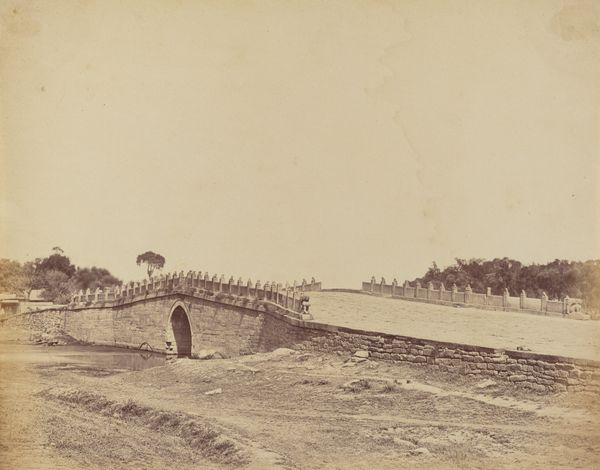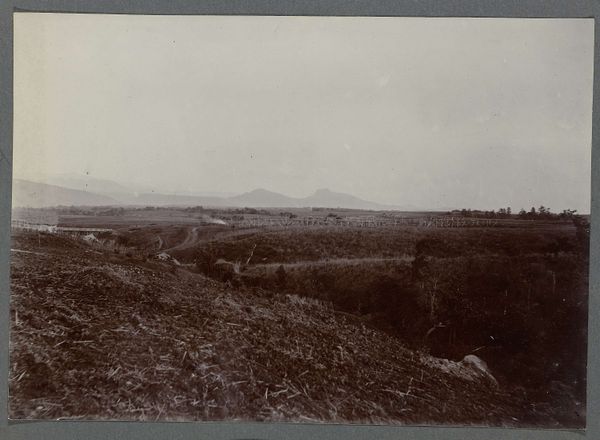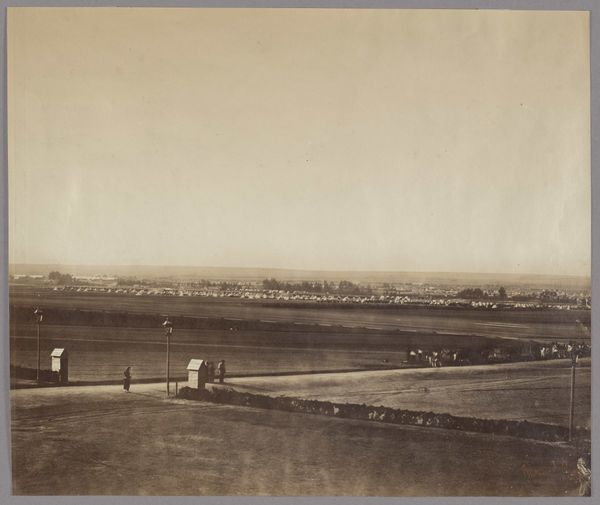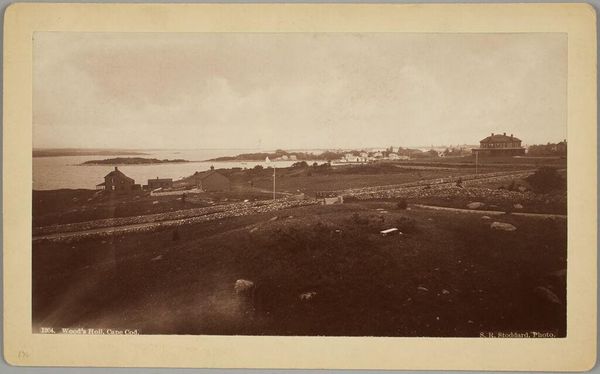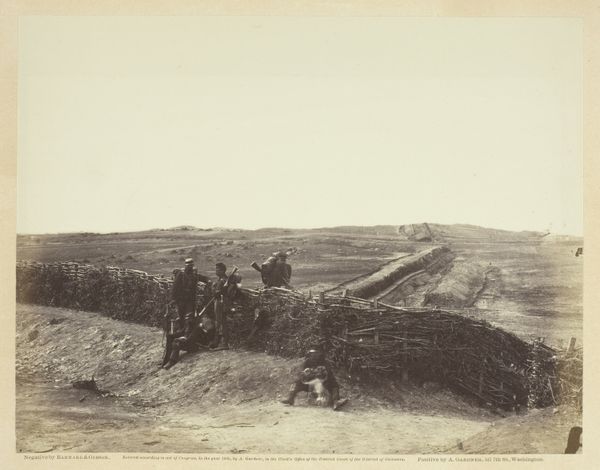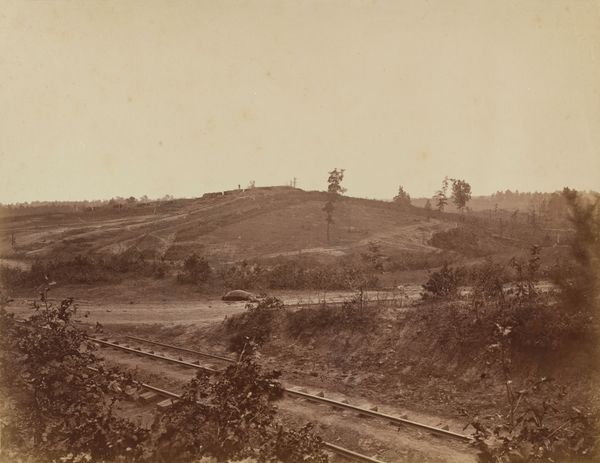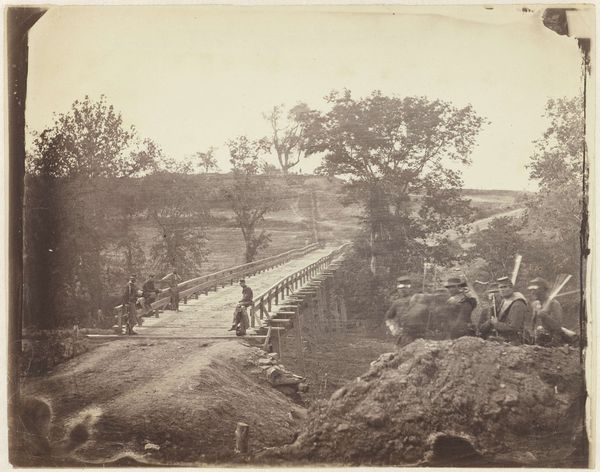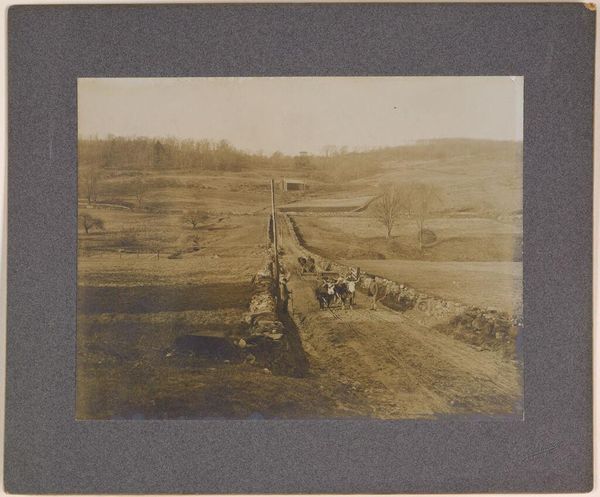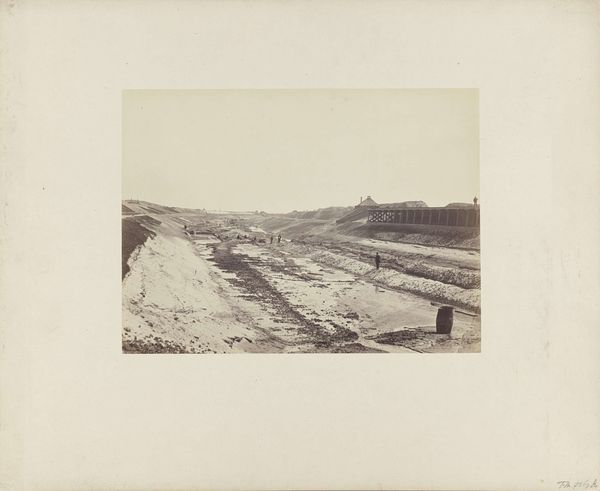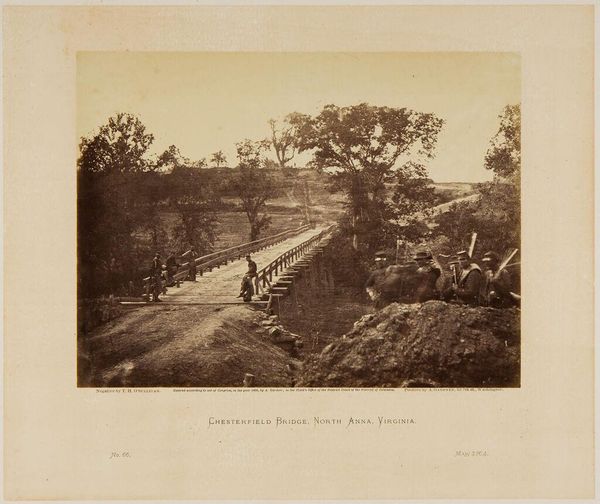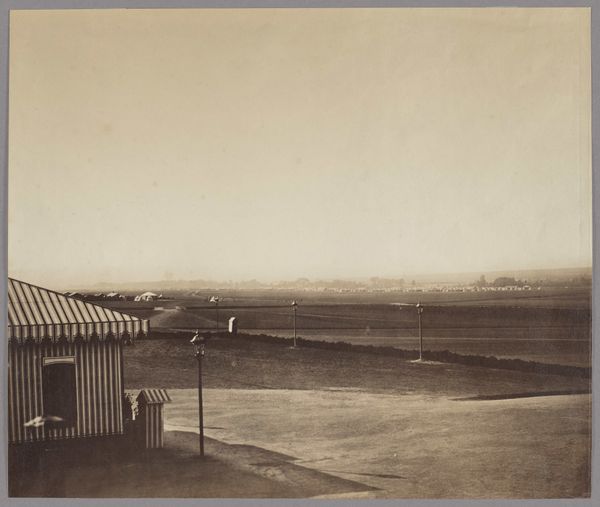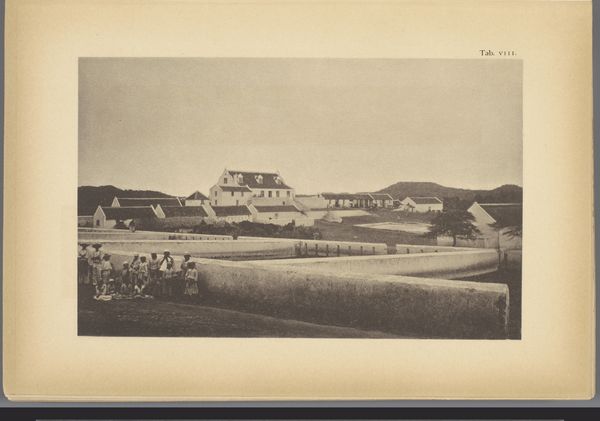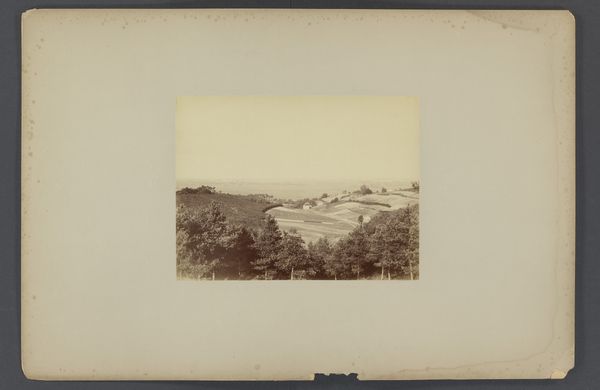
print, photography, gelatin-silver-print
# print
#
landscape
#
photography
#
gelatin-silver-print
#
hudson-river-school
Dimensions: image/sheet: 8.8 × 5.6 cm (3 7/16 × 2 3/16 in.) mount: 10 × 6.2 cm (3 15/16 × 2 7/16 in.)
Copyright: National Gallery of Art: CC0 1.0
Marcus Ormsbee created this photograph of Central Park in the 1860s, a period of immense social and environmental transformation in New York City. The image captures a winding road, absent of people. This absence is striking. Central Park was conceived as a democratic space, yet its accessibility was often mediated by class and race. Whose experiences were being prioritized in the design and representation of this urban landscape? Ormsbee, who died very young, leaves us with an evocative, yet somewhat sterile image. The bare trees evoke a sense of stillness. The road curves, promising movement, but leads only out of view. Perhaps in this tension, we can sense the complex negotiations of space, access, and representation that defined Central Park. Consider how this image invites us to reflect on the narratives we construct around public spaces, and whose stories are included or excluded.
Comments
No comments
Be the first to comment and join the conversation on the ultimate creative platform.
